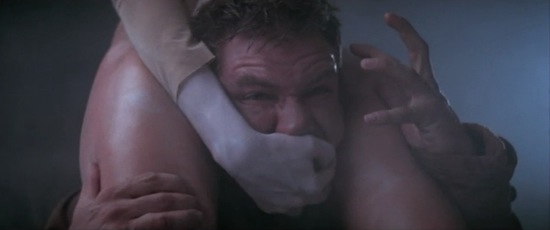Blade Runner

If Ridley Scott’s Blade Runner is celebrated for its Moebius-inspired design, I say that’s as it should be. And if some give the movie credit for “literacy,” by reading into it references (e.g., Anderssen and Kieseritzky’s Immortal Game of chess) that aren’t there, that’s OK with me, too — because it’s plenty literate, indeed. Some complain that Blade Runner eliminated key plot elements from Philip K. Dick‘s Do Androids Dream of Electric Sheep? (e.g., the Mercerism cult, not to mention electric sheep), but I say the movie communicates Dick’s themes without ’em.
However, I object to the absence, in Blade Runner, of the phildickian suggestion that the android-hunting protagonist might himself be an android. You argue: “In the movie, Deckard’s apartment is cluttered with photos in which he doesn’t appear; in some versions, he has a false memory of a unicorn; he’s a cold fish!” True, but that’s subtle. Viewers never really question Deckard’s humanity… except, perhaps, when prompted by the blocking in this scene.
The sexy replicant Pris (Daryl Hannah) is crushing Deckard (Harrison Ford)’s skull between her thighs. Yet he struggles — why? No authentically human heterosexual male could possibly object to such a death!

